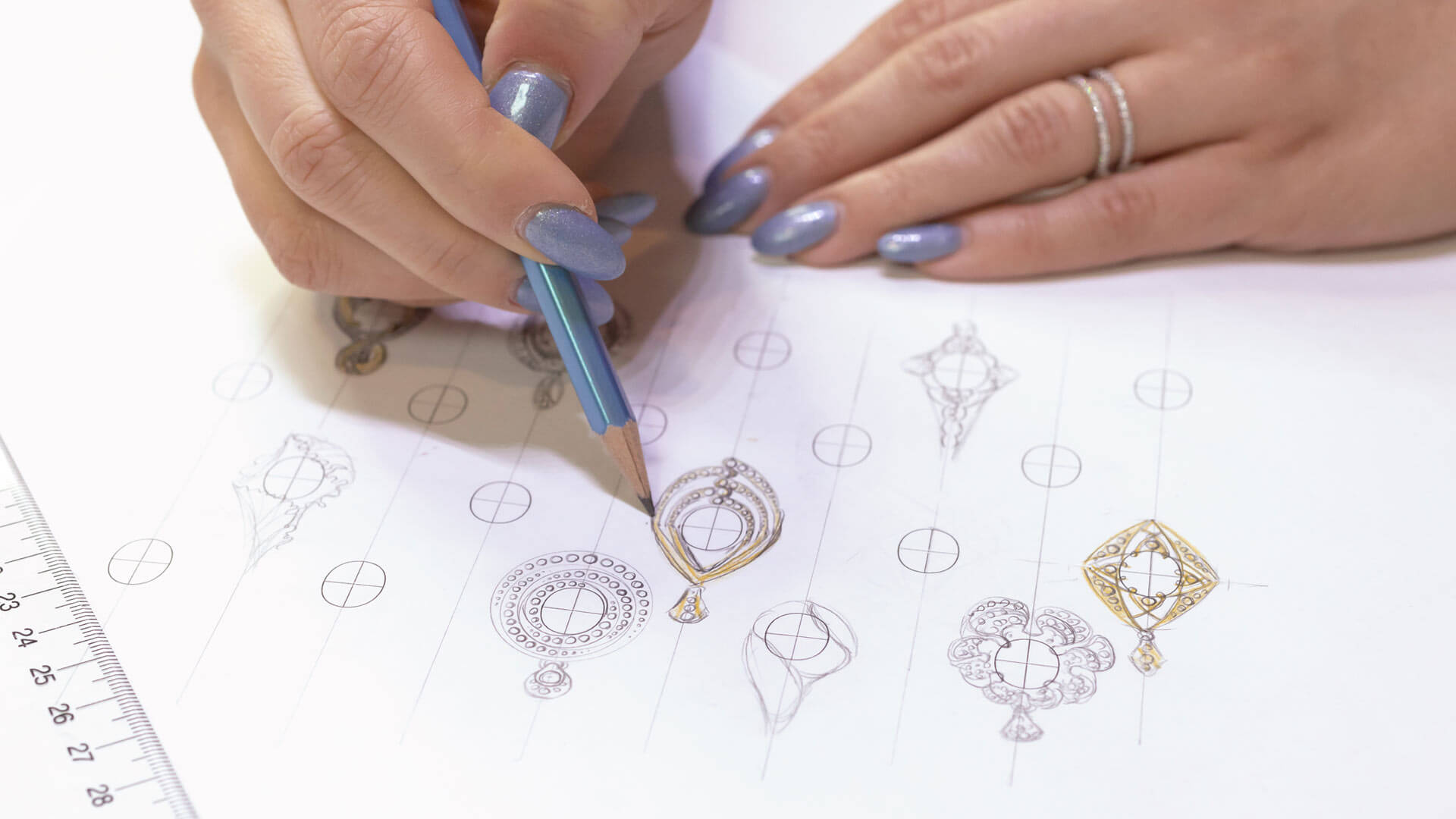Designing Jewelry

The art of designing jewelry is inspired by many emotions; the desire for beauty, the need for acceptance, the urge to impress or to show commitment. The need to express reverence, loyalty or remembrance, have driven jewelry designers to dream since the beginning of time.
Artisans designing jewelry have created spiritual and religious symbols to represent faith. They have designed jewelry to symbolize matrimony and lifelong commitment as well symbolic jewelry that show loyalty to family or organizations. Creations have been made in remembrance, to memorialize lost loved ones, and of course, to bring out the sheer beauty of a gem.
So it stands to reason that any discussion about designing jewelry should start with an inspiration. There are a few motives that can inspire a jewelry designer. Primary incentives to design jewelry include focusing on the intended users desires and needs. Another is to ride the wave of current market and fashion trends by elaborating current popular themes. Still another more free spirited approach is from the soul whereby artisans own dreams and the materials and gems dictate the direction of design.
In short a jewelry designer must either think about the person who will be enjoying the works along with their lifestyle and needs, or consider the precious gem or material that is before them how to best bring out its beauty. In the end we are either designing jewelry to appeal to a segment of the population with a particular sense of style, or we are designing jewelry to accentuate the featured materials.
Jewelry Designing

From the purist’s view of jewelry designing, it would be nice if we could let our imagination go in any direction we wished and create free-spirited themes as they come to mind.
In actuality, precious gems and metal require a bit more planning. When fine jewelry is designed, we must meet the desires of the individuals for whom it is intended. Consideration has to be placed on a wide variety of concerns, ranging from color and styling to the cost of materials. It is up to the designer to know the limitations in the jewelry making processes and the abilities of the craftsman who execute them.
Once a theme, value, and target user are established, the artist can work within reasonable boundaries and unleash the talents and passion they possess. With a given theme and reasonable parameters on materials, it is possible to confidently design jewelry and reflect the mood or emotion desired.
For some designers, this is done with a detailed color painting, while others create a simple, basic sketch to use as a guideline. Many of today’s artisans will create a comprehensive, computer rendering through CAD jewelry design, and some simply work with a visual image in their mind. Regardless of the methods, the original design will continue to evolve throughout the entire creation process. It seems that subtle tweaks are inevitable once the jewelry construction begins. It is almost impossible for artisans designing jewelry to anticipate all of the engineering issues encountered in jewelry fabrication and stone setting. Whether feasibility or esthetic, design alterations continue as the masterpiece evolves at the hand of the craftsman.
Designing Gemstone Jewelry
When designing gemstone jewelry, the determining factor is the jewel. In most cases when the jewelry design revolves around the gemstone it is because it is exceptionally rare, unique in character, or a non-traditional shape or size.
In the case of rare gems, our jewelry designers will put the emphasis on the featured stone. The goal is usually simplicity, in order to draw attention to the primary gem. Elements of style and decisions about symmetry can be applied; however, the primary goal is to make the rare jewel the most important element of the piece.
When we are working with unusual stones or asymmetrical shapes, the design process becomes a little more open-ended. The free spirited form of a gemstone will often dictate the styling. Often, the shape or size of a stone determines whether it will be worn in a ring, on the neck, wrist, or as a brooch. Most designers find that free form stones dictate the shape of jewelry, and the artist determines the mood.









